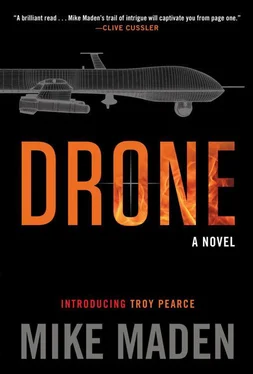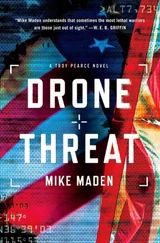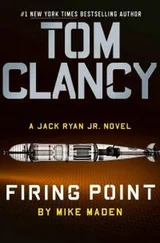“But according to William Colby, the North Vietnamese said that the Phoenix Program was the most effective thing we ever did during the entire war.”
“Of course he’d say that. It was his program.”
“You think he lied about it?”
“I have no way of knowing. It was before my time.”
Pearce had mixed feelings about that war. His father had served in it and eventually died from it. “What I do know is that the Phoenix Program killed nearly thirty thousand Vietnamese.”
“I only want to kill one Mexican.”
“And that’s where my company comes in.”
“Yes. But it must be kept secret.”
“Who else knows about this, besides you, me, and Early?”
“Sandy Jeffers, my chief of staff, and the attorney general.”
“What does she say about all of this?”
“You don’t strike me as someone overly concerned with matters of the law.”
“I have people to worry about.”
“Without getting into the specifics, you’re operating under my authority as commander in chief, the same way President Obama dispatched SEAL Team snipers to take out the Somali pirates.”
“Our situation is a little different. We’re private contractors.”
“Then just think of it as a private contract for taking out the garbage.”
“And if this thing goes south?”
“Doubting yourself, Mr. Pearce?”
“Not at all. But humor me.”
“Then I’ll have your back. Mike will vouch for me.”
“He already did. I just wanted to hear it from you.”
“Is that why you’re recording our conversation?” Myers asked. It was an educated guess.
“Trust, but verify. In case I’m not around,” Pearce said. “Speaking of trust, why isn’t Greyhill in the loop?”
“I take it you don’t follow politics very closely. We had a shotgun wedding. Only the shotgun was pointed at me.”
“Is the operation covert or clandestine?” Pearce chose his words carefully. “Covert” actions fell under Title 50 of the U.S. Code, “clandestine” under Title 10. What Pearce was really asking was: are you notifying the armed services committees or the intelligence committees about this action?
“Neither. Or both. It’s irrelevant. This is a tactical operation. Congress doesn’t have the right to micromanage national security.”
“In other words, you want to keep this secret because your political opponents would make a lot of hay over this, even if it does go right.”
“I need to keep this secret because if I publicly shame Castillo, he’d be forced to retaliate.”
Myers locked eyes with Pearce. All her cards were on the table.
“Are you in or out?” she asked.
Pearce had an instructor at the Farm. He was one of the original cold warriors with the missing fingernails to prove it. The old man had drilled the Hagakure into their heads like sixteen-penny nails into wet lumber. Even now he could hear the spymaster’s raspy voice in his head.
The warrior makes all of his decisions within the span of seven breaths.
Pearce took just two.
Old habits die hard.
“Better call Mike back in,” Pearce said.
Myers pressed the intercom. “Please send Mr. Early back in.”
Early came in, a fresh cup of coffee in his hand. “You want me to throw this bum out?” he asked with a smile.
Pearce pushed out the chair next to him with his foot. Early fell into it. Pearce turned to Myers.
“No JAG lawyers looking over my shoulder. No bean counters asking for receipts. No squawking when I hand you guys the bill—and it’s gonna be a doozy. I do this my way, with my team, no questions. Are we clear on that?”
Myers and Early both nodded. “Agreed,” Myers added.
“I’m also going to need access to DEA intelligence and NSA databases, at least the ones my firm hasn’t already hacked. Without their knowledge, of course.”
“Mike will handle all of that,” Myers said.
“One more thing. I’m going to need you to flip the switch on DAS down there.”
“DAS?” Early asked.
“Domain Awareness System,” Myers said. “The domestic version is up and running in New York City. You know, like that TV show, Person of Interest . Links all of the CCTV cameras, criminal databases, public records, and just about every other surveillance or intelligence database to a central processing hub for total information awareness.”
Both men’s faces posed the same question to her. How do you know about DAS?
Myers grinned. “My company subcontracted some of the DAS software package on an NSA contract a few years back. The NSA uses a more robust suite of assets for covert surveillance in noncompliant cities. Deep web stuff.” She was referring to the fact that NSA was tapped into every major telecom, search engine, and ISP around the world, by either tacit agreement or covert operation, often through backdoor software and compromised system components. Essentially, there wasn’t a private or public database in the world that NSA couldn’t break into, especially in Latin America. “But isn’t deploying DAS a little bit of overkill, Mr. Pearce?”
“Pulling the trigger is always the easy part. Target acquisition is the name of the game. I can’t shoot ’em if I can’t see ’em. The more data we have, the better. We want to crack open as many of the Mexican intel databases as we can, but phone records, driver’s licenses, and car registrations will go a long way, too.”
“So long as we can do that without alerting the Mexican government. I want to keep this as limited as possible. One kill, one message. End this thing, or at least contain it,” Myers said.
“Suits me fine. One kill, one job, and we’re done. I doubt you’ll be able to stop at one and I don’t have any intention of standing under the tree after we swat the hornets’ nest.”
“Understood, Mr. Pearce. One job and you’re done,” Myers agreed.
“If you can spare him, I’d like Mike to liaison for us.”
“He’s all yours, Mr. Pearce.” Myers stood up, extended Pearce her hand. He took it. She had a firm grip.
“I’m just glad we never met,” she smiled.
Pearce Systems Research Facility, Dearborn, Michigan
Pearce stood with Udi Stern next to an oversize treadmill. The former Israeli paratrooper was three inches shorter than Pearce, but broader in the chest.
“Go ahead, Udi. Try.” Dr. Rao smiled.
Udi smiled nervously at her. “I don’t want to break it,” he said, in heavily accented English.
“You won’t,” she said.
Udi stepped closer to the Petman 3, a third-generation Boston Dynamics humanoid robot that was on loan to Pearce Systems. It was jogging at exactly five miles per hour on the treadmill. Its legs pumped effortlessly, and the combat boots it wore pounded on the oversize treadmill’s rubber pad in a faultless heel-and-toe strike.
Dr. Rao’s team had recently perfected the software that enabled it to run for the first time, and she had renamed the robot “Usain Bolts” after the famous Jamaican runner. But the experimental drone was still a headless mechanical monster with a skinless aluminum-titanium frame, the stuff of science-fiction nightmares. On its chest it wore a black case that housed the video sensor package.
Udi lifted his own steel-toed boot and lightly kicked the Petman 3, but the robot barely budged. It was still connected to a thick power cable hanging down from overhead, but the cable was providing no physical support.
“She said to try and knock it over, not ask it for a date,” Pearce said.
Udi’s dark eyes narrowed. He threw a hard side kick into the robot’s hip. Usain Bolts was shoved hard to the left, but it never broke stride, and quickly returned to center.
Читать дальше












